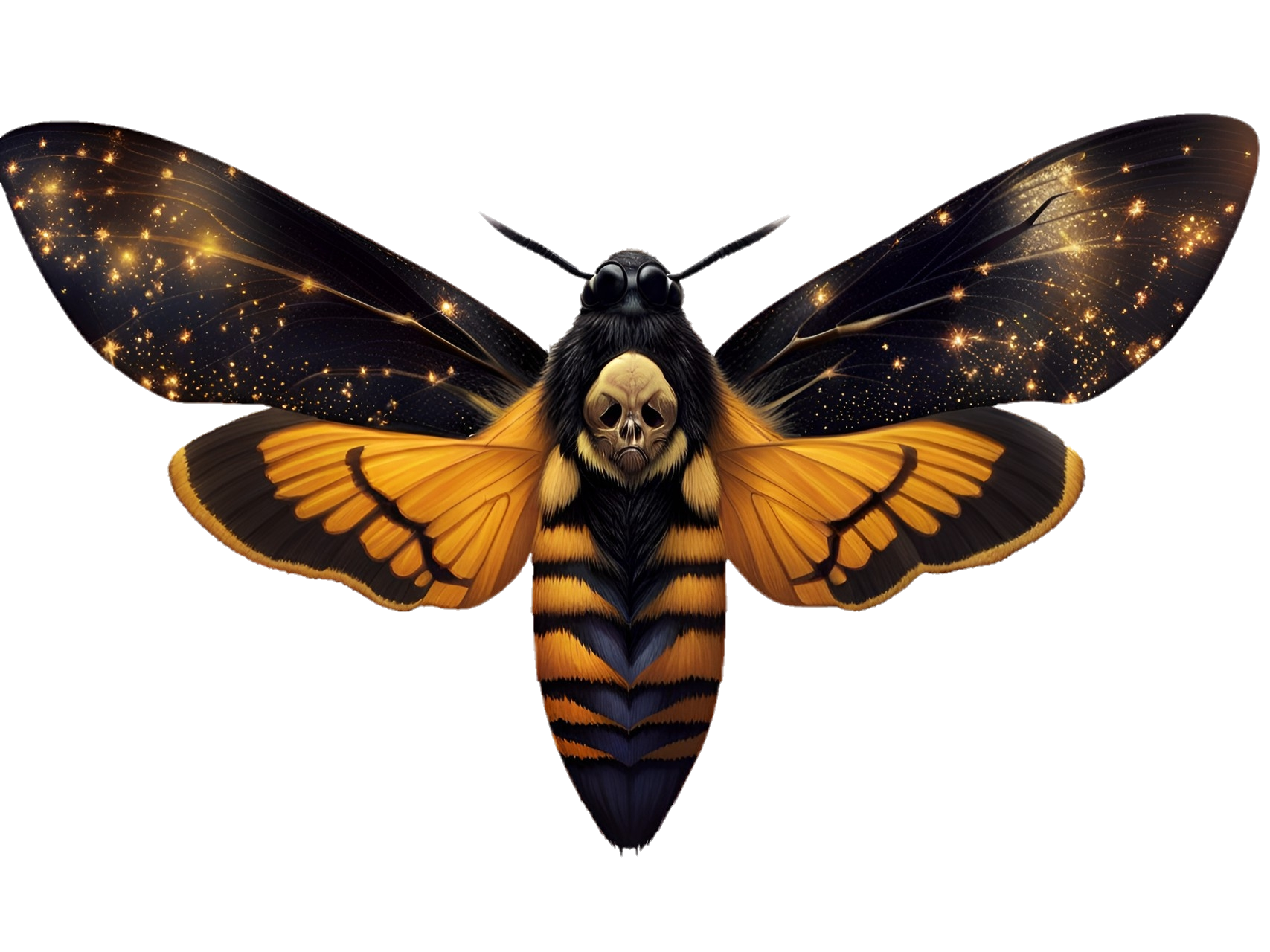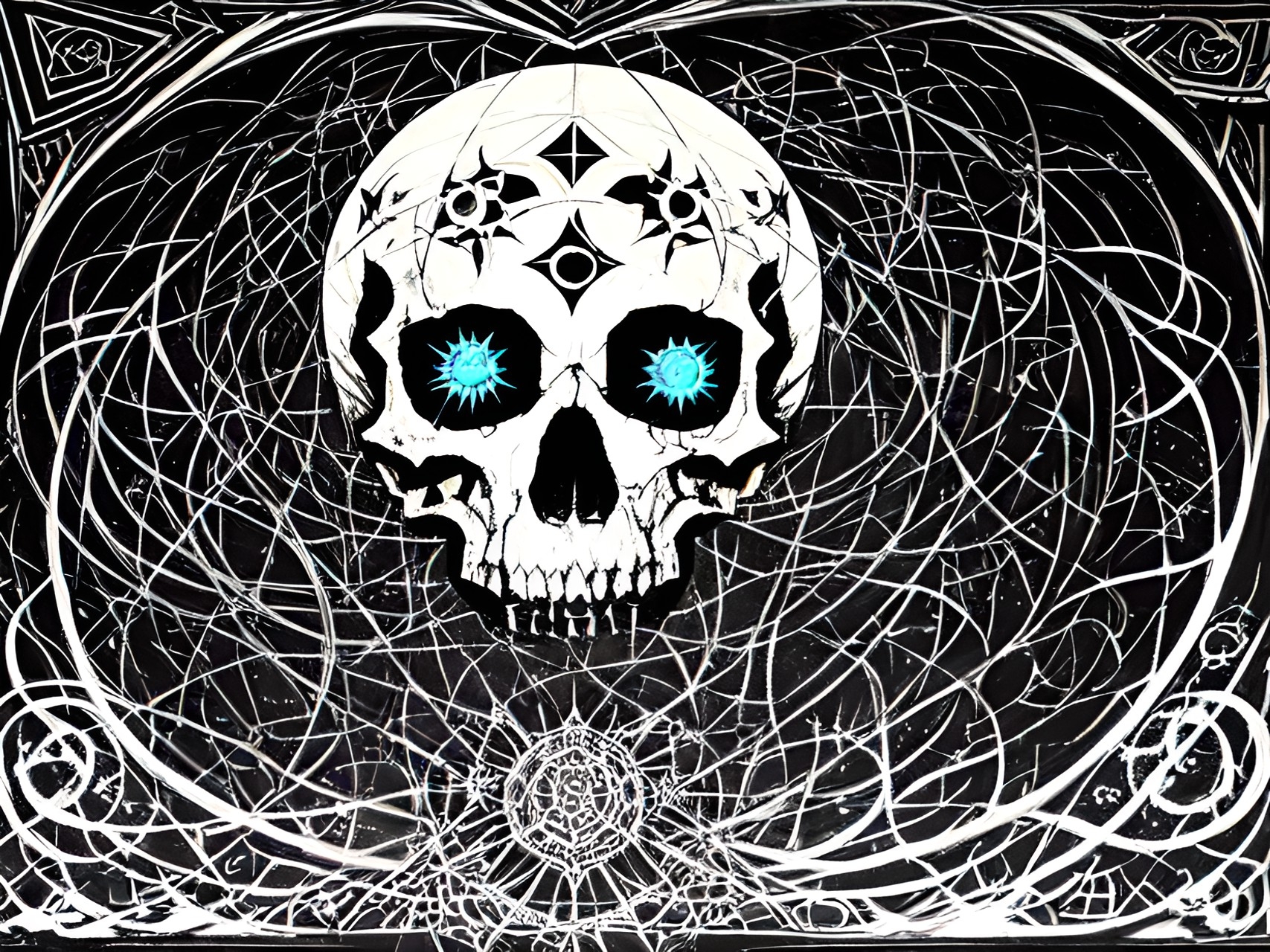Ijjin Hawk-Moth
First AbilityRithaldis' Charge Thanks to Rithaldis' Charge, solar moths can absorb and store up radiant energy inside their bodies without limit and cannot be harmed by radiant energy (sunlight, radiation, solar plasma). They can convert this into magic energy, use it to strengthen their muscles or re-release it like an Aura at will. However, unlike most other manifestations, they cannot produce their own radiant energy--they are reliant on a source.
Second AbilityVokda's Diet Thanks to Vokda's Diet, Ijjin are able to consume or absorb void as sustenance, to heal or to replenish magic energy. They cannot be harmed by void either, natural or magical, absorbing it instead. Void is not plentiful in most environments but might be produced by other organisms blessed by Vokda! |
Anatomy |
Original Ancestor | Lifespan |
|---|---|
Acherontia atropos African Death's Head Hawk-Moth | 3-6 months |
Wingspan | Caterpillar Size |
3-5.5 in 80-140 mm | 5 in 125 mm |
Coloration |
|---|
Caterpillar can be yellow, green to brown. Adults are large and striking, carrying a distinct skull shaped pattern on the back of their thorax. Most of its coloration are dark brown and bright yellow, it's abdomen striped similarly to a hornet. It's forewints are all dark, contrasting the bright yellow hind wings. In their magic form, the dark brown goes stark black like an empty void and the yellow sears white and hot like plasma. |
Habitat |
Ijjin are present throughout Alkelbulan and Eluziar, breeding in the Shamsi Desert and migrating south or into the Eluzian Valley through Flumen Pontem and Sesli Plato. As adults, they especially prefer the Tenebrous Chain. Ijjin reside in fields or gardens in rural areas, xeric or montane shrublands and the heathlands or forests of the Tenebrous Chain. |
Diet |
Adults either absorb solar energy in Shamsi or only eat honey, especially that of Void Bees by sneaking into their hives. Their ancestors imitated the cutaneous fatty acids of the bees to fool them but these moths have no need, totally immune to their void magic if not healed by it. They void bees largely avoid and ignore the Ijjin as it is capable of destroying their entire hive with their radiant magic—the Ijjin is allowed to eat their fill of honey rather than risking its wrath. Caterpillars feed on the leaves of potato, verbena, Azeradj Olive Tree, beets, Nerium Cupidinis and butterfly bush. |
Life Cycle |
While capable of breeding throughout their range, including in Eluziar, Ijjin only breed continuously in the Shamsi Desert, pupating below ground in cooler climates until summer. Adults in Shamsi migrate south or east in search of honey but might occasionally remain in Shamsi, absorbing radiant energy. Caterpillars are fully grown in four weeks or sooner in Shamsi. They are fairly sedentary as caterpillars, rarely leaving their feed plants. However, they aren't complacent, clicking their mandibles at threats and even biting them! They pupate for 4-6 weeks, digging 5-10 cm deep earthen shelters. After emerging, they absorb radiant energy before making the long journey east or south |
Mythology |
Thanks to their ominous appearance and dark magic, these moths are associated with death and doom. Some even believe they are Azryth messengers, ushering the souls of the dead to their master or carrying messages between he and Zalikar. Ijjin are capable of making rapid squeaking sounds to alarm predators and give aggressors a single warning before unleashing their stored energy. This sound is considered an omen of impending death! |










Comments